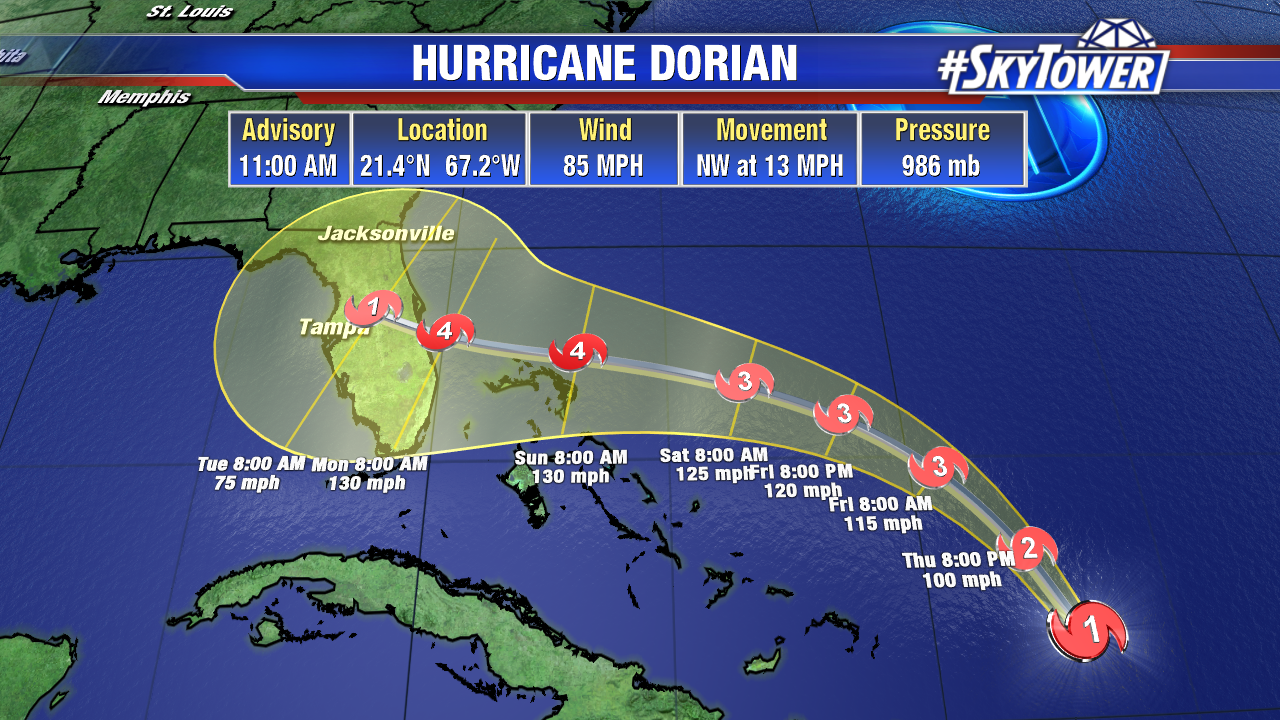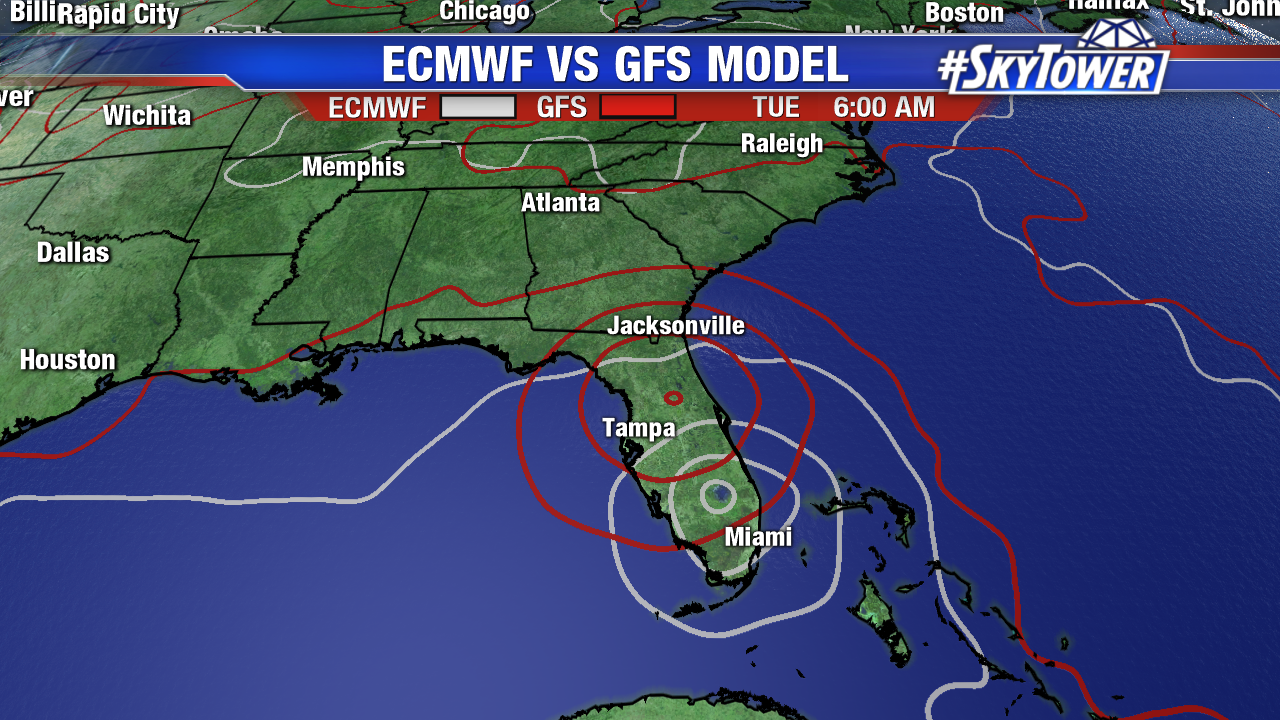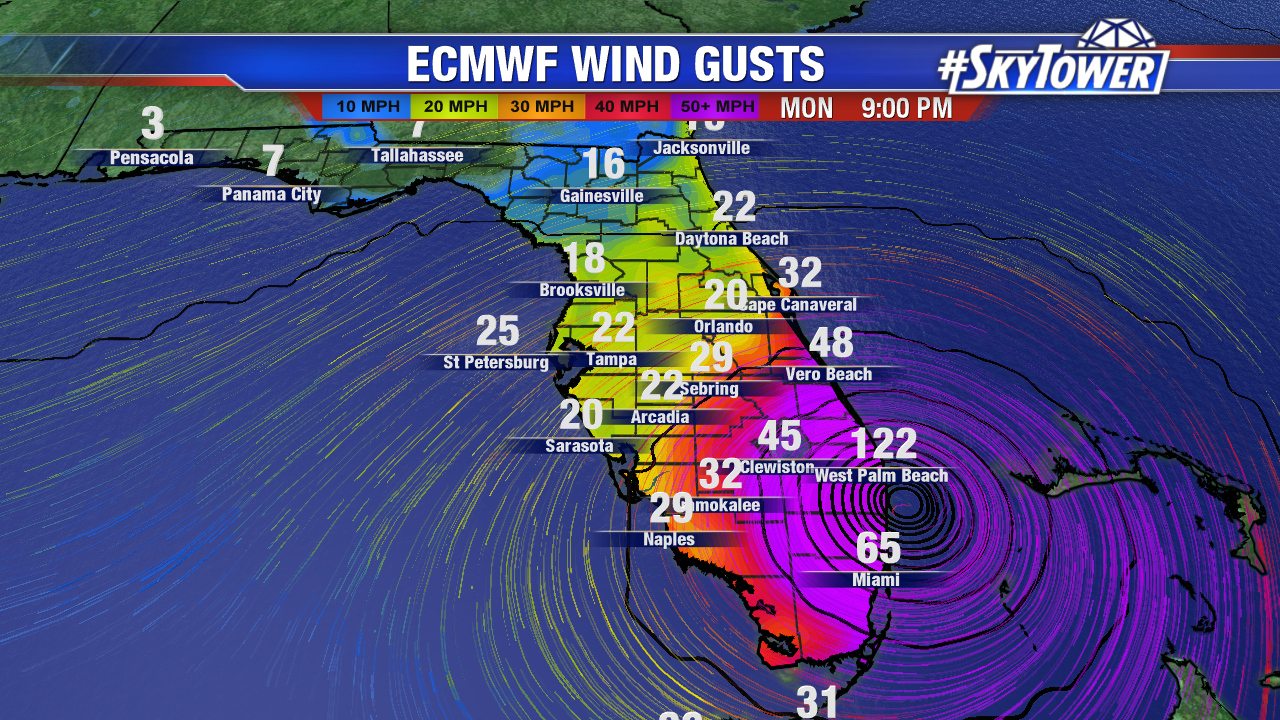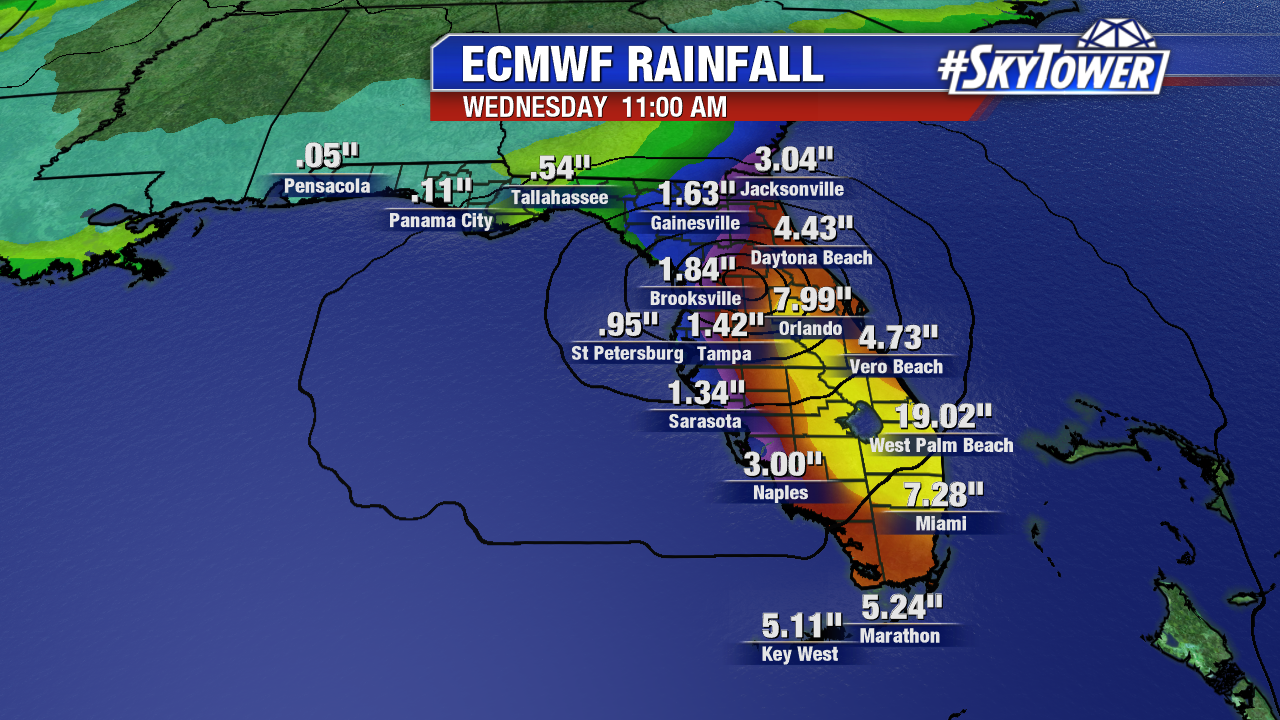Dorian remains a healthy category 1 hurricane. Pressure continues to fall and wind speeds will be increasing going forward. As of 11am Thursday, the storm was located about 220 miles NNW of Puerto Rico. Movement to the NW will continue for roughly another 24 hours before Dorian takes a turn more to the west toward the Bahamas and Florida. The latest track from the National Hurricane Center has Dorian making landfall as a Category 4 hurricane on Florida’s East Coast.

While it’s still too early to nail down exactly where the storm will come ashore, models have certainly come into a little better agreement in the last 24 hours. Consensus right now seems to be a landfall somewhere between Cape Canaveral and West Palm Beach. Obviously, that’s still a fairly large spread, but it will shrink over time.

The exact track will determine who sees what, especially in regards to storm surge and the highest winds. For now, anyone along Florida’s East Coast should be preparing for a major hurricane making landfall. Inland threats will range from hurricane-force wind gusts, to freshwater flooding, to tornadoes. We will be able to pinpoint local impacts as Dorian draws closer in the coming days. Stay tuned.


